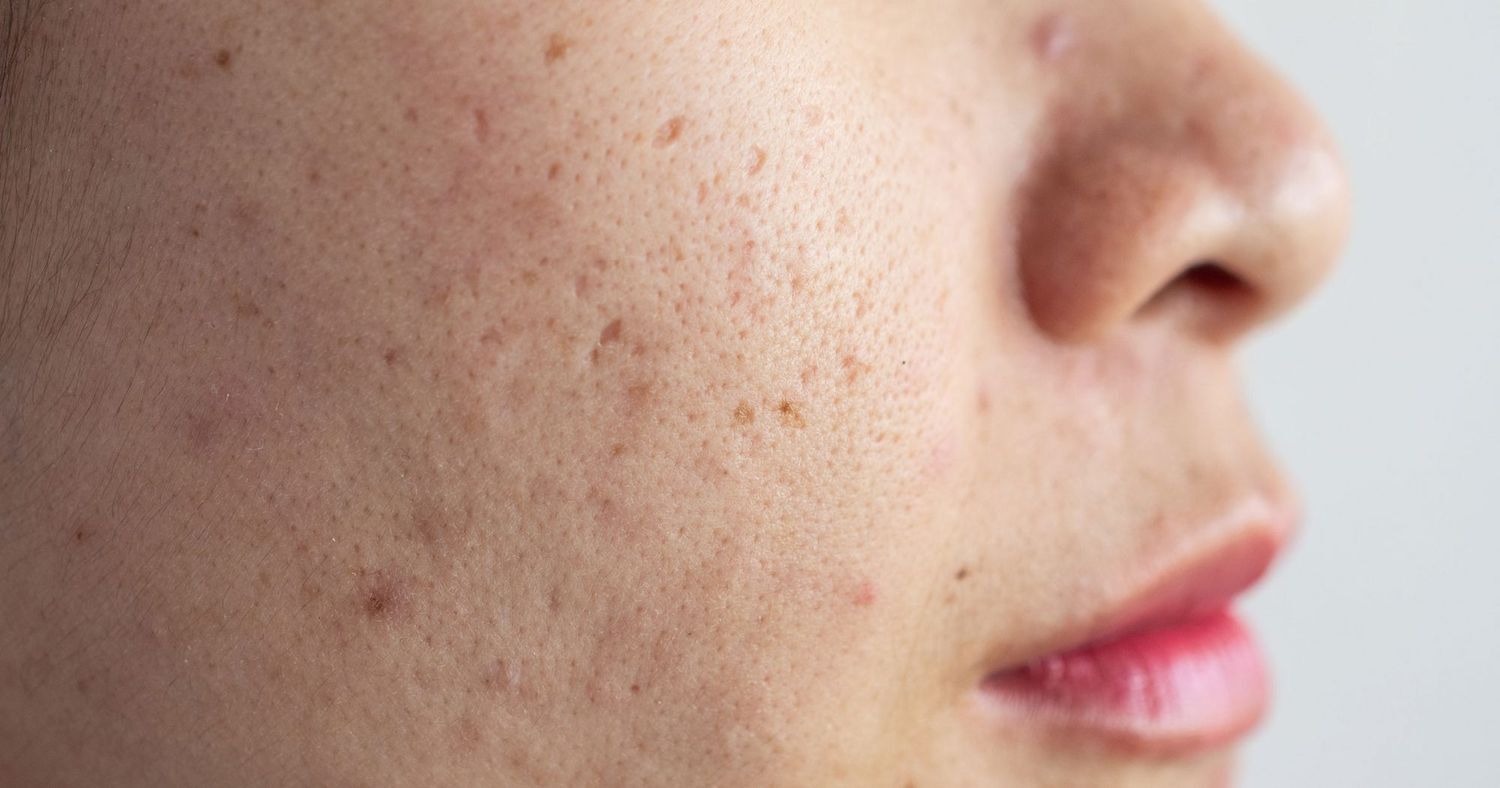The body’s normal healing process results in scars. According to the Cleveland Clinic, when skin is harmed due to an accident or injury, the body creates new collagen-based tissue to fill in the gaps. Jill Salyards, DO, a board-certified dermatologist and the founder of Refine Dermatology in Knoxville, Tennessee, explains that scars develop after the healing process because the new collagen created to fill in the incision is not the same texture as the surrounding skin. Except for relatively shallow wounds on the surface, the majority of wounds cause some degree of scarring.
All scars are not created equal. The sort of scar and its final form are, in part, impacted by how the wound is cared for while it’s healing. The degree of scarring can also be influenced by how bad the wound was. The chance of scarring increases with the depth of the wound, according to Jeremy Brauer, MD, a board-certified dermatologist and the owner of Spectrum Skin and Laser in Purchase, New York. Scars are usually elevated or flat. Flat scars that are similar in color to your skin tone and flatten over time should result from normal wounds. Compared to raised scars like keloid and hypertrophic scars, which are formed from thick tissue and might seem black and red in comparison to the surrounding skin, these are less noticeable.
Those who have scars that stick out may prefer to avoid or minimize them while the wound is still healing since they can attract unwelcome attention and lead to insecurities. Others might desire to remove scars that hurt or are uncomfortable. Yet ultimately, the choice to avoid scars is up to the individual. There’s no need to worry about treatment if your scars don’t have any unfavorable side effects, such as pain or itching. Scar Prevention Dos and Don’ts helps to guide basic information which is suitable to our skin texture. Some people may even take pride in their scars, such as C-section survivors or others who have experienced major medical issues and view their scars as battle wounds.
1. Do Keep the Wound Clean
According to the National Library of Medicine, a wound that results in broken skin increases the chance of bacterial infection. Dermatologists advise keeping the wound clean during the entire healing process because it will happen in stages.
According to Dr. Salyards, a wound should be kept clean right away. Your initial reaction might be to reach for a bottle of hydrogen peroxide or another disinfectant, but she warns that doing so could exacerbate scarring. She notes that hydrogen peroxide can worsen skin damage and inflammation while it is healing, which can result in further scarring. Antiseptics like rubbing alcohol and hydrogen peroxide can damage skin tissue and shouldn’t be used to clean wounds, according to a review published in 2019 in Plastic and Reconstructive Surgery Global Open.
2. Don’t Wait Too Long to Get Stitches
Although medical assistance isn’t always required for wounds to heal, you can benefit from having sutures depending on how bad your wound is. Getting stitches can help closure the wound and hasten wound healing. Scars develop after the wound has healed. According to the AAD, they might also aid in lessening the look of scars.
Although dermatologists advise against it, you might wish to hold off on having stitches until deep cuts heal on their own. Aanand N. Geria, MD, a board-certified dermatologist and the founder of Geria Dermatology in Rutherford, New Jersey, advises that if stitches are required, they should be applied as soon as possible when the damage is still fresh. A dermatologist might decide not to suture a wound if too much time has passed because bacteria or germs may have accumulated there and increased the risk of infection. Dr. Geria advises consulting a doctor right away for a second opinion if you are unclear if you need stitches.
3. Do Keep the Wound Moist
Keep the wound moist after cleansing it to avoid scarring, advises Brauer. According to him, emollients like petrolatum generally prevent the formation of scabs. In comparison to treatment in dry surroundings, keeping wounds moist prevents the production of scars, according to a prior review. Wet or moist healing has been demonstrated to accomplish the fastest recovery and least amount of scarring, according to a review in the International Journal of Inflammation, which summarized a wealth of data on wet, moist, and dry healing for scar formation.
Salyards advises applying petroleum jelly as a moisturizer and wrapping the wound with a bandage. This should continue until either the sutures are removed, or the open wound has completely healed with new skin.
4. Don’t Pick at the Wound
Dermatologists generally advise against plucking at your skin in any situation. Picking at it just appears to make the problem worse, whether it’s a fresh wound or an ongoing breakout. The AAD claims that it can make scars and acne worse.
Avoid picking, scratching, or other manipulation of open wounds or freshly developed scabs. Salyards claims that picking at wounds throughout the healing phase causes increased inflammation and scarring. Also, it may make you more susceptible to illness from bacteria on your hands.
5. Do Use a Wound Dressing
The wound is in intimate touch with a wound dressing. It shields the wound, keeps it moist, and keeps it from being exposed to the surroundings. According to the Mayo Clinic, dressings like bandages and gauze keep the wound clean and should be changed frequently. The National Library of Medicine states that when dressings are changed, some of them remove wound drainage and dead tissue.
Brauer advises using a dressing with a nonstick surface to keep wounds covered. “Don’t let the wound dry out or expose it to the air.” Nevertheless, dressings could use glue or an adhesive to adhere to the skin around them.
The AAD advocates pressure therapy for decreasing and healing wounds and says wearing a wound dressing offers the added benefit of providing pressure to the wound.
6. Don’t Skip Sun Protection
Everyone should ideally use sunscreen every day. According to the Skin Cancer Foundation, it guards against sun damage and skin cancer. Dermatologists advise using sun protection even more seriously if you have a recent wound and wish to minimize the possibility of scarring.
“The standard suggestion is to wear SPF 30 or more daily and reapply every two hours when outdoors,” Salyards explains. “Using sunscreen can help reduce scarring.” Brauer advocates taking it a step farther and keeping the area out of sunlight altogether.
In essence, protecting your scar from the sun can hasten its fading. If you’ve ever received a tan, you are aware of the way that sunshine causes skin to appear darker. Scars are no different from skin in this regard. Prior research found that blocking the production of a pigment called melanin decreased scar hyperpigmentation when exposed to ultraviolet (UV) rays. Scar prevention Dos & Don’ts helps to figure out the chances of skin protection from diffrent product of sun protection shield.
7. Do Use Silicone Scar Sheets
According to the National Library of Medicine, silicone scar gels and gel sheets have been shown to be beneficial at reducing scars, but petroleum jelly and vitamin E have not. These are Scar Prevention Dos and Don’ts The physicians we spoke to advised moving to silicone sheets for scar avoidance after the incision healed, however other methods may still be useful for keeping an open wound moist.
If worn soon after an incident, silicone scar sheets “may help avoid or improve new scars,” says Geria, adding that it’s crucial to use them for the first year a scar is visible. They might not be as useful after that. Don’t spend time, then.
8. Don’t Overexert the Area
f you have a new scar, try not to move the area too much, per the Cleveland Clinic. “Stay still,” says Geria. “When a scar moves, it alters its formation and turns it into a thicker or wider scar,” he explains. “Do your best to allow the wound to heal by not overexerting the area.”
What you can do instead is gently massage the scar. “Gently massaging early on can greatly impact healing, especially during the first year,” says Geria, adding that this helps to break up tissue that could lead to thick scars.
9. Do Be Wary of Scar Creams and Topical Products
Think twice before grabbing one of the top-selling scar creams. These may be worthwhile, although some dermatologists are dubious. Salyards claims that not all scar creams are created alike. She generally advises using silicone sheets in place of scar creams.
Choose a scar cream with silicone gel if you want to use one. A trial that was published in 2020 in Plastic & Reconstructive Surgery Global Open demonstrated that silicone gel and silicone scar sheets are equally effective. According to a review published in 2020 in Dermatologic Surgery, both considerably enhance scar outcomes whereas the evidence for other topical scar managements is insufficient.
10. Don’t Have Unrealistic Expectations
It takes time for wounds to mend and for any scars they leave behind to disappear. You’ll need to exercise patience and form reasonable expectations about the appearance and potential healing of your scars.
Even if you follow all the appropriate procedures, such as keeping your wounds clean and moist, using silicone scar sheets, using sunscreen, etc., some circumstances are some scar prevention Dos and Don’ts beyond your control. According to one review, some people are more prone to developing keloid scars, such as those with darker skin tones.
It’s also rare that a scar will fade completely. While some scars do disappear over time, scars are permanent. Certain treatments can help make scars less noticeable if they concern you.




